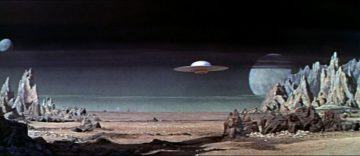by Jochen Szangolies
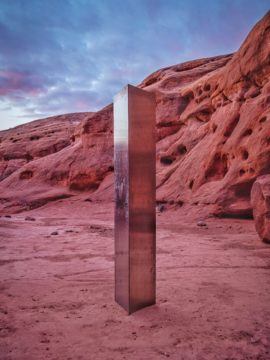
In November 2020, an odd news item cut through the clouds of pandemic-induced haze with a sharp metal edge: way out in the Utah desert, a strange monolith had been found, a three-sided metal prism (and hence, not quite aptly called a ‘monolith’, with ‘-lith’ coming from Greek líthos, meaning ‘stone’). Subsequent comparisons of satellite imagery of the area revealed that it must have been set up sometime between July and October 2016, having remained unnoticed since—which means that, in an age where few people can do so much as have coffee without immediately informing the whole world via various social media channels, somebody (or -bodies) drove out into the middle of the Utah desert, dragging power tools and sheet metal with them, and assembled the 3m-tall structure, all without apparently telling a single soul. Even the monolith itself bears no identifying marks—no artist’s signature, no fabricator’s stamp, nor any cryptic symbols or a message on how to ‘guide’ humanity after the apocalypse.
Encounters with objects such as the Utah monolith have a slightly uncanny quality. All of a sudden, the natural structure of the landscape is punctuated by clear lines signaling something artificial—something, we expect, that has a purpose, something created towards some end. Something made, as opposed to something grown, or otherwise the product of natural forces. Something that exemplifies a certain design.
The Utah monolith teases all this, but refuses to provide any answers—and thus, it embodies an element of the absurd: a work with no purpose, a means directed towards no discernible end. Some anonymous creator has expended considerable effort for no apparent reason other than to put a metal column in a place where few, if any, would ever see it, and has left us no clue as to their motivation, no means to wrap our heads around the sheer implausibility of the thing’s jutting right out of the bedrock, wedging itself into the world and our minds like a knife between the ribs.
Should we then just chalk this up to the random whim of some eccentric? To a long prank, played at the expense of whoever might eventually chance upon it? Was the creator just driven by the same sense of impishness that makes people strap boards to their feet to trample down crops, creating circles some take for evidence of alien visitation? Read more »


 Billions of people around the world continue to live in great poverty. What is the responsibility of rich countries to address this?
Billions of people around the world continue to live in great poverty. What is the responsibility of rich countries to address this? The best thing about a painting is that no two people ever paint the same one. They could be sitting in the same garden, staring at the same tree in the same light, poking the same brush in the same pigments, but in the end none of that matters. The two hypothetical tree-paintings are going to turn out different, because the two hypothetical painters are different also.
The best thing about a painting is that no two people ever paint the same one. They could be sitting in the same garden, staring at the same tree in the same light, poking the same brush in the same pigments, but in the end none of that matters. The two hypothetical tree-paintings are going to turn out different, because the two hypothetical painters are different also.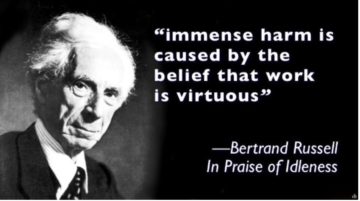 The work ethic is deeply ingrained in much of modern society, both Eastern and Western, and there are many forces making sure that this remains the case. Parents, teachers, coaches, politicians, employers, and many other shapers of souls or makers of opinion constantly repeat the idea that hard work is the key to success–in any particular endeavour, or in life itself. It would be a brave graduation speaker who seriously urged their young listeners to embrace idleness. (I did once hear Ariana Huffington advise Smith College graduates to “sleep their way to the top,” but she essentially meant that they should avoid burn out by ensuring that they get sufficient rest.)
The work ethic is deeply ingrained in much of modern society, both Eastern and Western, and there are many forces making sure that this remains the case. Parents, teachers, coaches, politicians, employers, and many other shapers of souls or makers of opinion constantly repeat the idea that hard work is the key to success–in any particular endeavour, or in life itself. It would be a brave graduation speaker who seriously urged their young listeners to embrace idleness. (I did once hear Ariana Huffington advise Smith College graduates to “sleep their way to the top,” but she essentially meant that they should avoid burn out by ensuring that they get sufficient rest.)
 Ninety percent cancers diagnosed at Stage I are cured. Ninety percent diagnosed at Stage IV are not. Early detection saves lives. Unfortunately, more than a third of the patients already have advanced disease at diagnosis. Most die. We can, and must, do better. But why be satisfied with diagnosing Stage I disease that also requires disfiguring and invasive treatments? Why not aim higher and track down the origin of cancer? The First Cell. To do so, cancer must be caught at birth. This remains a challenging problem for researchers.
Ninety percent cancers diagnosed at Stage I are cured. Ninety percent diagnosed at Stage IV are not. Early detection saves lives. Unfortunately, more than a third of the patients already have advanced disease at diagnosis. Most die. We can, and must, do better. But why be satisfied with diagnosing Stage I disease that also requires disfiguring and invasive treatments? Why not aim higher and track down the origin of cancer? The First Cell. To do so, cancer must be caught at birth. This remains a challenging problem for researchers. In the beginning, the god of the
In the beginning, the god of the 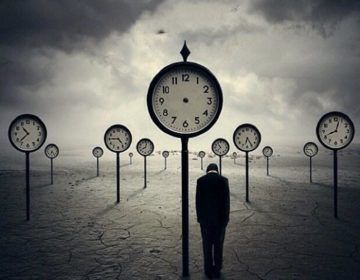 In long plane journeys I do not sleep well. But some years back in one such journey I was tired and fell fast asleep. When I woke up, I saw a little note on my lap. It was from the captain in charge of the plane. It said, “I did not want to disturb you, but from our computer log I could see that your total travel so far with our airlines group just crossed 3 million miles. So congratulations! It seems you travel almost as much as I do.” I made a quick calculation, 3 million miles is like 6 return trips from the earth to the moon. With a deep sigh I chanted to myself, as our plane was hurtling through the night sky, a word from an ancient Sanskrit hymn: Charaiveti (keep moving!)
In long plane journeys I do not sleep well. But some years back in one such journey I was tired and fell fast asleep. When I woke up, I saw a little note on my lap. It was from the captain in charge of the plane. It said, “I did not want to disturb you, but from our computer log I could see that your total travel so far with our airlines group just crossed 3 million miles. So congratulations! It seems you travel almost as much as I do.” I made a quick calculation, 3 million miles is like 6 return trips from the earth to the moon. With a deep sigh I chanted to myself, as our plane was hurtling through the night sky, a word from an ancient Sanskrit hymn: Charaiveti (keep moving!)

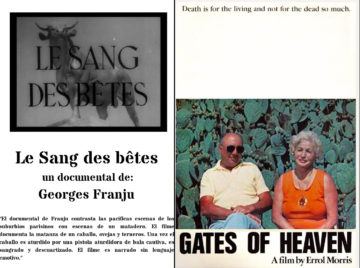 Blood of the Beasts (Le sang des bêtes)
Blood of the Beasts (Le sang des bêtes)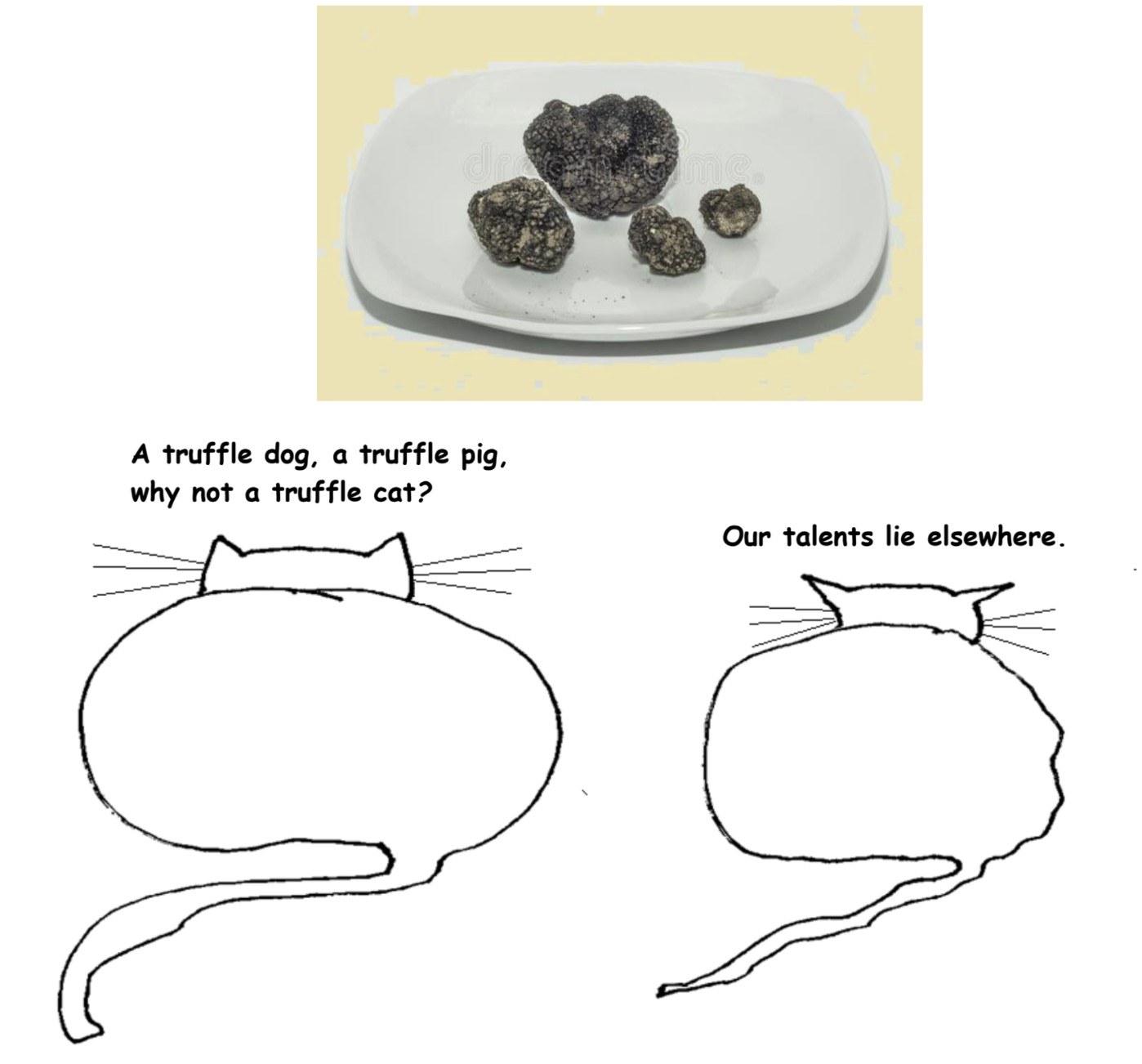

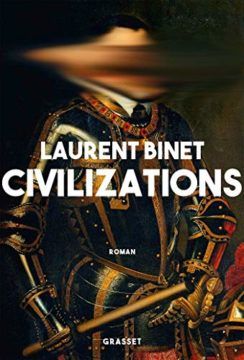 One of my oldest friends, an economic historian who serves as the Academic Director of a museum of Jewish life in northern Germany, is, like me, a child of May; and, during our recent birthday month, as is our custom, we exchanged gifts by post. Since we also share a love of books and history and a taste for grand, occasionally outlandish theory, as well as an abhorrence for futuristic science fiction, the novels we sent each other were in equal measures fantastical and backward-looking: examples of counterfactual historical fiction, what has come to be known as uchronia, the imaginative remaking of a bygone era that is the temporal counterpart to utopian geography.
One of my oldest friends, an economic historian who serves as the Academic Director of a museum of Jewish life in northern Germany, is, like me, a child of May; and, during our recent birthday month, as is our custom, we exchanged gifts by post. Since we also share a love of books and history and a taste for grand, occasionally outlandish theory, as well as an abhorrence for futuristic science fiction, the novels we sent each other were in equal measures fantastical and backward-looking: examples of counterfactual historical fiction, what has come to be known as uchronia, the imaginative remaking of a bygone era that is the temporal counterpart to utopian geography.

